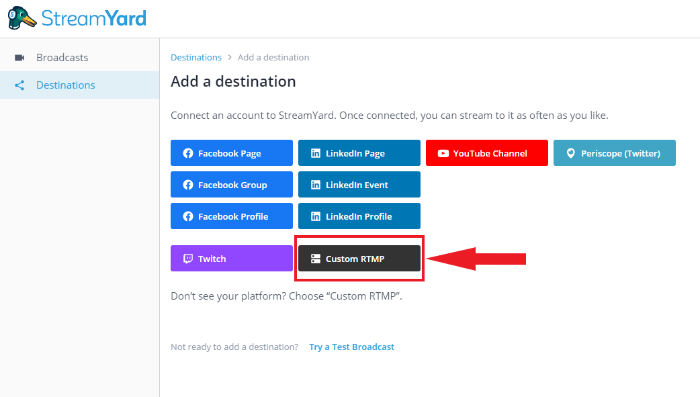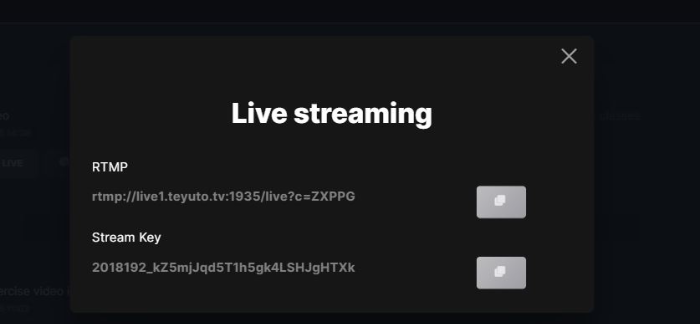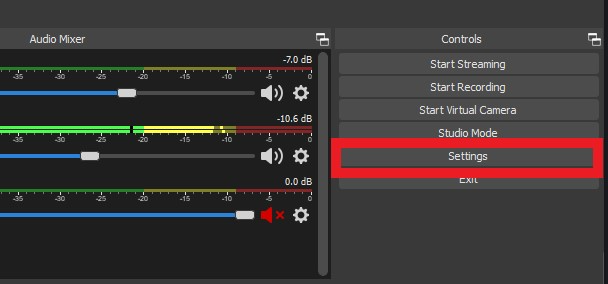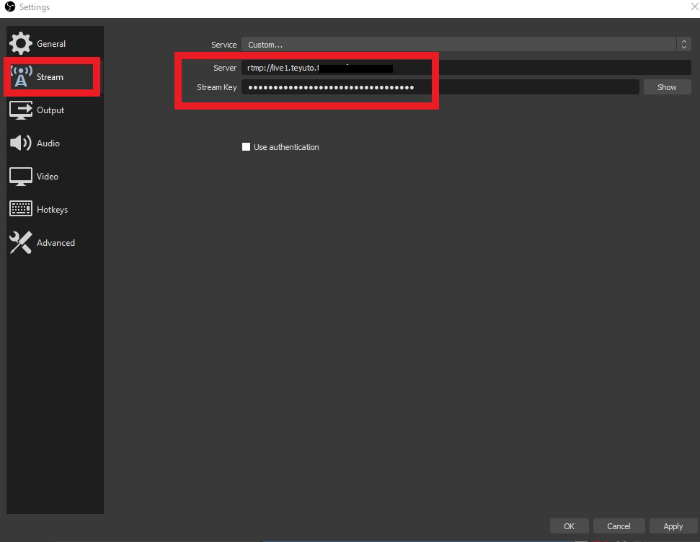

Case Study: OTT for Live Events - The Super Bowl Experience
The Super Bowl is one of the most popular live events globally, attracting millions of viewers annually. NFL has integrated over-the-top (OTT) services to enhance the Super Bowl experience for fans worldwide.
In 2020, the NFL launched a new OTT streaming called "Super Bowl Experience," which allowed fans to:
- watch live game highlights
- access behind-the-scenes content
- and participate in interactive features.
The management of the event provided these services on multiple devices like smartphones, tablets, and connected TV devices.
One of the decisive features of the Super Bowl Experience was its use of virtual and augmented reality (VR/AR) technologies. Fans could access immersive experiences, such as
- a 360-degree view of the stadium
- virtual tailgating parties
- and even an AR game where they could catch footballs on their mobile devices.
The Rise of OTT for Live Events
According to a study by eMarketer, the number of US households with traditional pay-TV subscriptions is expected to drop from 86.5 million in 2020 to 72.7 million in 2024, while the number of household consumers with OTT video subscriptions is expected to rise from 209.5 million to 232.1 million during the same time period.

Furthermore, the global OTT market is expected to reach $332.2 billion by 2025, growing at a CAGR of 16.7% from 2020 to 2025: the report was published by MarketsandMarkets. Simultaneously, the global cable TV market is expected to decline at a CAGR of -2.3% from 2021 to 2026.
A survey by Deloitte found that in 2020, 76% of US consumers subscribed to at least one paid streaming, while only 56% subscribed to a traditional pay TV service.
OTT Streaming Services: A Big Challenge to Traditional Broadcasting:
Traditional broadcast companies have been a fundamental source of coverage for live events, be it entertainment or sports. You will find these networks everywhere. However, OTT streaming services are diverting this stigma by offering more flexible options to audiences.
In the current era, the popularity of Cloud video streaming services has grown exceptionally, and some factors have played a decisive role in its spread, e.g. flexibility and the ability to reach a wider audience through different devices.
Major Companies in the OTT Streaming Industry:
Several companies, including Amazon Prime, Netflix, and Hulu, have emerged as significant players in the OTT streaming industry.
These companies have set successful footprints in streaming services globally. Since they have massive content libraries, customers can view uninterrupted content without restriction.
Increased Demand for Live Streaming Services:
The impact COVID-19 pandemic has accelerated the demand for live-streaming services because the audience is more interested in consuming a wide variety of global content. In response, many live events have been adapted to allow for virtual attendance, further increasing the demand for OTT streaming services.
Benefits of OTT Streaming Services for Live Events:
OTT streaming services play a pivotal role in providing unprecedented access to live events, regardless of location. Some significant advantages of OTT streaming services for live events:
Accessibility: Cloud video streaming is easily accessible on multiple popular devices. Viewers can consume content from their place, making it easy to watch on the go or from the comfort of their workplace or home.
Flexibility: Viewers have simple access to control their viewing experience using OTT cloud video streaming. They will be able to catch everything they enjoy by being able to pause, rewind, and fast-forward live events. Additionally, viewers may easily watch live events on demand, allowing them to catch up on any web series, sports, or action movie episodes they may have missed.
Cost-effective: Because a variety of subscription plans are available that fit different price ranges, cloud video is frequently more affordable than traditional cable and satellite TV providers. Instead of being forced into overpriced packages, viewers can subscribe to particular channels or events.
Global reach: OTT streaming services have a global reach, which means that audiences can access live events all around the world.
Top OTT Trends for Live Events

1. Immersive Viewing Experience
As OTT streaming services continues to improve. The focus is increasingly on creating an immersive viewing experience for audiences. This means incorporating new technologies like virtual and augmented reality to give viewers a sense of being present at the event, even if they're watching from home.
2. Social Media Integration.
The integration of social media apps is becoming increasingly crucial for live events. From live tweets and comments to interactive polls and Q&A sessions, social media integration allows audiences to engage with the event in real-time. It provides a new way of consuming content without any restrictions.
3. Personalization and User Preference
Cloud videos are becoming more personalized, and this trend is extending to live events. Services now offer tailored recommendations and customized experiences based on viewers' preferences, making it easier for audiences to discover new events they'll love.
4. Multiple camera angles.
OTT streaming services experiment with multiple camera angles, allowing viewers to switch between different camera views during live events. This allows viewers to customize their viewing experience and catch all the action from different perspectives.
5. Integration with smart home devices
As smart home devices become more popular, OTT platforms are looking for ways to integrate with these devices to enhance the viewing experience. This could mean voice control or even incorporating bright lighting and sound to create a more immersive experience.
How to Set up a live stream on Teyuto?

Learn how to set up live streaming on Teyuto:
- Sign up for a Teyuto account at .
- You will receive a confirmation email
- After signing up, log in to your account.
- Teyuto will take you its Dashboard
- On Left Menu, tap “Videos” under dashboard
- You will see three options “ upload video, Live streaming, and Video Quiz

- Tap Live Streaming
- A new window will appear where you can put a cover image and write the title and description of video
- There are more features you can try, like adding tags, setting privacy and particular dates to release or hide video
- Once you are done with all steps, click the blue “Go live” button.
How to create and Start a Live Streaming with StreamYard and OBS?
- For a live streaming video to begin, go to streamyard.com and enter your email address.
- Please be aware that streaming with custom code rtmp requires a premium membership.
- Before beginning the live streaming, you must have a premium membership to execute flawless streaming with custom code rtmp.

- Choose "Destinations" -> "Add a destination" from the main menu, then choose "CUSTOM RTMP" to enter Teyuto's RTMP code.
Note: Guest users could join the active live streaming without downloading any software. Subsequently, future live streams can also be scheduled so that everything is ready when needed.
Create and Start a Live Streaming with OBS
- To create a live video, select the NEW VIDEO button, select GO LIVE option and enter all required information.
- After saving the video, click "GO LIVE" to see a new page below

- Download OBS . If you are a new user, a new window will guide you through the configuration process. You can also select "Tools" in the toolbar and select "Auto-configuration wizard".
- You need to get keys to begin streaming on Teyuto. For this purpose, you need to visit OBS and tap “Settings”

- Next, choose “streams” and tap “ Customize streaming server”. Similarly, enter the Live Server and provide Stream Key in the given fields.

- You can click the +symbol in the sources box to capture the video. Finally, you are ready for broadcast by clicking "Start live"

- You can click on “Stop broadcast” to end the streaming.
- As soon as the live broadcast ends, you can make it available for VOD for a couple of seconds, as it depends on the speed of your connection.
- Once the process completes, you can offer it to viewers for a seamless watching experience.
Challenges of OTT for Live Events
OTT for live events has several challenges which can impact viewers. Here are some of the top challenges of OTT for live events:
1. Technical Hurdles.
One of the biggest challenges of OTT for live events is technical difficulties. With so many viewers tuning in to live events, it can strain the streaming service's servers, resulting in buffering and other issues. It can be frustrating for viewers and even lead to them missing key event moments.
2. Internet connectivity
Another challenge of OTT for live events is the reliance on internet connectivity. If viewers need a strong enough internet connection, they may experience buffering or be unable to access the live event. It can be particularly challenging for viewers in rural areas with limited internet options.
3. Piracy
Piracy is another challenge OTT streaming services face regarding live events. With so much valuable online content, it's tempting for some viewers to try accessing the live event through unauthorized channels. This can impact the revenue of event holders and streaming services alike.
4. Monetization
Monetization is another challenge for OTT streaming services regarding live events. Streaming services must find ways to generate revenue from live events while offering viewers an affordable and accessible way to watch. It can be a delicate balance to strike and requires careful consideration of subscription models and pricing strategies.
5. Content rights
Finally, content rights can be challenging regarding OTT for live events. You need to negotiate with streaming services to ensure comprehensive protection and that they receive fair compensation for its use. Hence, it can be particularly complicated for global events involving multiple countries and legalities.
Why is Teyuto the best OTT platform for live streaming?

Teyuto offers a range of features designed to make content streaming convenient and engage with your audience. Here are some of the top features of the Teyuto OTT platform for live streaming:
Customization: Teyuto allows users to fully customize their live streaming channel with their branding, logos, and colors.
Multi-CDN and adaptive bitrate streaming: Teyuto uses a multi-CDN approach that ensures the best possible streaming quality, regardless of the viewer's location.
Analytics: Teyuto provides detailed analytics and reporting tools that allow you to track the success of live events.
Monetization options: Teyuto offers multiple monetization options for live events, including pay-per-view, subscriptions, and advertising.
Conclusion
From original content and personalized recommendations to flexible pricing and monetization options for creators, these platforms are changing how we consume and create content. With the tremendous development of technology, it will be fascinating to see the innovation and creativity OTT platforms bring to content creators.


Enjoyed this read?